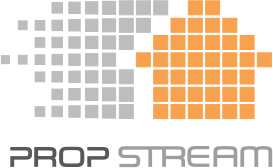Are you curious as to how a "Subject To" Deal Works? Study the Paperwork Below for Deal Mastery!
DOCUMENTS LIST
(Listed in the Order Typically Used In The Transaction)
DISCLAIMER: I AM NOT AN ATTORNEY AND AM NOT OFFERING LEGAL ADVICE. USE AT OWN RESPONSIBILITY.
USE WITH HOMEOWNER:
1) Sub2.0 Property Info Sheet: Reminder cheat sheet about what documents you’ll need to gather to complete the subject to transaction.
2) Purchase & Sales Agreement (PSA): This 1 page Agreement is used to purchase properties and provides you control over the property for a specific time frame. It is missing many of the traditional clauses found in a Board of Realtors Agreement. The advantage of this form is that it is simple for Sellers to understand.
3) SUB2.0 Disclosure – When YOU Buy the House From The Original Seller: Review this Disclosure with your Sellers when you are buying the house “subject to” their mortgage. Have them sign the form when the Purchase & Sales Agreement is signed and retain the original in your files.
4) Borrower’s Authorization to Release Information: Use this form for the Seller to grant permission to you and your end buyer to see current mortgage values.
USE WITH END BUYER:
5) Appointment confirmation memo: Schedule the Homeowner to show your property deal for you with this appointment confirmation memo (helps you from losing the deal)
6) Assignment of Contract: This is the document to use to “sell” the property. Since you do not own the house you can not “sell” it. Assign your rights to purchase the property. There are 2 Options Available = 1. When your end buyer is an investor 2. When your end buyer is going to live in the property.
7) SUBJECT TO Disclosure – When YOU Sell to Your End Buyers: Review this Disclosure with your Buyers when you are selling the house “subject to” the mortgage. Have them sign the form when the Assignment of Contract is signed and retain the original in your files.
USE AT CLOSING WITH TITLE COMPANY / ATTORNEY:
8) SUBJECT TO Disclosure For Closing: Although the Seller and Buyer have already signed Disclosures, have them sign this Disclosure again at closing and have the closing agent notarize their signatures. This will prove that they saw the Disclosures on two separate occasions. It also informs all parties that you are no longer party to the transaction.
9) Lender’s Notification: Let the seller’s mortgage company know what you are doing with this letter template.
10) Lender’s Letter about Payments: Let the seller’s mortgage company know you are going to be sending payment for the seller.
11) Affidavit of Purchase Agreement: File at courthouse to prevent anyone else from purchasing the property.
12) Performance Mortgage: Here are the clauses to have your closing agent add into a Subject To standard mortgage template for your use and to give you control over the property if the buyer does not live up to their commitments.



